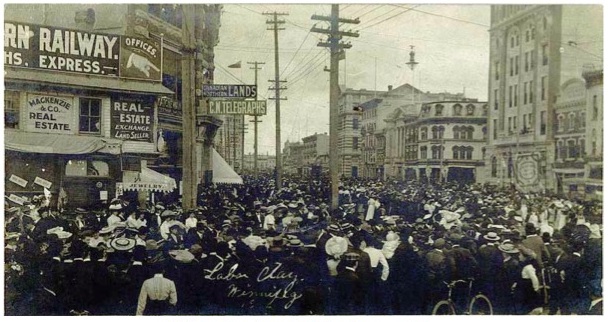Labour Day (or fête du travail) is celebrated on the first Monday of September. The day is often marked with parades, protests and reminders of the continued struggles of workers for fair wages, decent hours and safe working conditions.
Canada’s first Labour Day event was way back in 1872. As mechanized labour started to sweep the country with the Industrial Revolution, workers were increasingly easier to replace with machines. The fear of losing their jobs often kept workers in unsafe workplaces, working excessive hours for very little pay. At this time, Canada was still operating under archaic British laws which made unions illegal and had already been abolished in Britain.
Toronto Printers Union had been lobbying for a shorter work week for more than three years. Inspired by organizing by Hamilton workers for a 9 hour work day, they threatened to strike. After their employers ignored their demands, the workers marched off the job on March 27, 1872. The strike brought the entire publishing industry to a standstill and the union quickly gained the support of other workers. The workers’ march to Queen’s Park was made up of 10,000 workers, one tenth of the population of Toronto.
Though the publishing industry pushed back and considered legal action, Prime Minister John A. Macdonald, saw the political advantage of taking the side of the workers. Macdonald passed the Trade Union Act, which repealed the old British laws and decriminalized unions in Canada.
Though many of the workers still lost their jobs for the action and a shorter work week was still far from grasp, the workers learned the full power of their new strategy. An effective strike not only garnered attention from their employers but also from politicians. The parades held on Labour Day now mark that powerful march to Queen’s Park by the Toronto Printers Union and remind workers of the power they hold.




